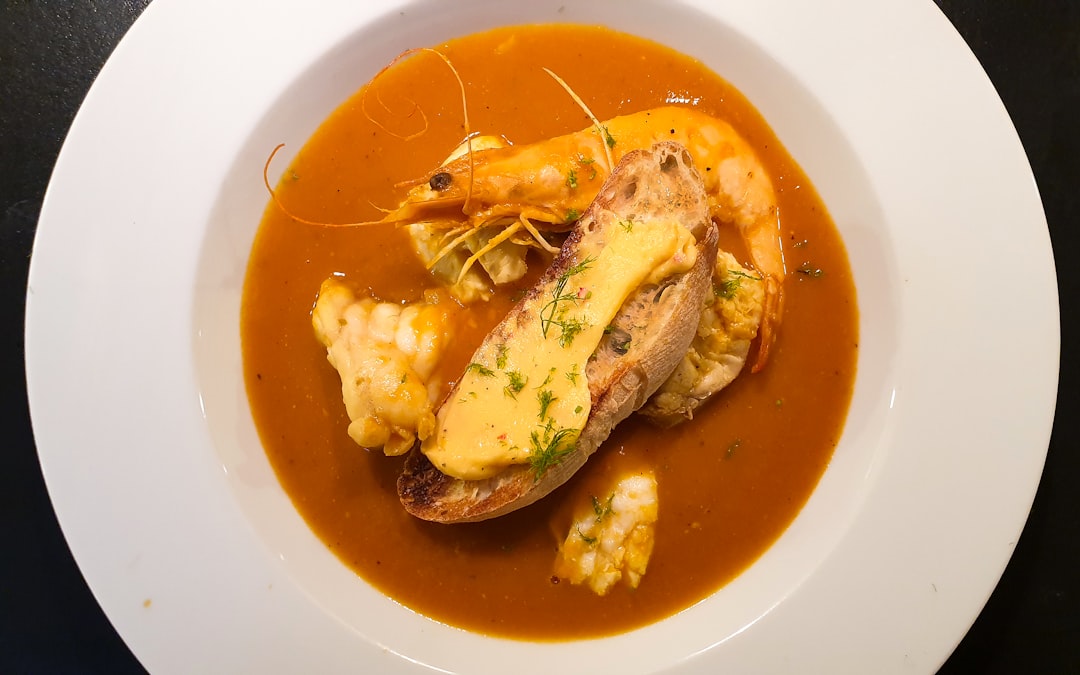Bouillabaisse
The base of the dish consists of several types of fish such as monkfish, sea bass and other oily fish. Aromatic vegetables such as onions and fennel are added for a richer flavor, while a variety of herbs, such as saffron, tarragon and thyme, provide a savory and robust infusion. To give the stew an added kick of flavor, tomatoes, garlic and either a white wine or fish stock are added.
Bouillabaisse is traditionally cooked in the open air over a wood fire, giving the dish a smoky flavor. Although this method is still used in some parts of France, it has become increasingly popular for cooks to prepare the dish in a pressure cooker or slow cooker. Many recipes also include a bouquet garnis (bundle of fresh herbs) or ras el hanout (blend of aromatic spices). This gives the stew a unique and exotic flair.
No matter how it's prepared, Bouillabaisse is sure to please. This exquisite seafood stew is bursting with flavor and will stimulate the palette of any food lover. You can also be sure that no two versions of Bouillabaisse will be exactly alike - just as the Provençal fishermen who created the recipe intended. Bon appétit!
Bouillabaisse recipes
Amazing Bouillabaisse recipes sourced from the web.
The origin of Bouillabaisse
Bouillabaisse is a traditional Provençal fish stew native to the coastal Mediterranean regions of France, the dish is typically made with a combination of Mediterranean seafood such as monkfish, sea bass, scorpionfish, and conger eel. But the origins of this delectable dish remain shrouded in mystery.
As the story goes, Bouillabaisse originated during Roman times when broth from cooked fish scraps was thrown onto the streets for the poor to eat. The broth soon gained immense popularity among the people, who would later spruce up the dish with additional spices and fish caught in the nearby waters. Another version of the origin of this traditional dish suggests that it had been created by local fisherman who needed a way to make use of the lesser-quality fish they found amongst their catch.
Whatever the true origin may be, it's hard to deny that Bouillabaisse has become a gourmand staple beloved all around the world. While its recipe may remain a closely guarded secret among dedicated chefs, its ingredients are typically a combination of garlic, tomatoes, olive oil, thyme, fennel, orange zest, saffron, and whatever fresh fish are available.
In any case, the cultural impact of Bouillabaisse is undeniable. Whether you prefer your Bouillabaisse garlic-scented or with a hint of saffron, the iconic dish has certainly stood the test of time and will remain a delightful part of French cuisine for many years to come.
Types of Bouillabaisse
If you’re searching for a dish that is sure to delight, then look no further than something so sublimely savory as Bouillabaisse. Originating from the coastal region of Marseille, this iconic seafood stew is as distinctive as it is delicious, with a variety of different styles and variations existing throughout the Provence region of France. The exact ingredients of Bouillabaisse are cherished and debated among gastronomes, with each chef having their own special recipe that makes their creation stand out from the rest. However, these common characteristics generally apply to all variants.
Firstly, Bouillabaisse must contain a selection of white fish and shellfish, typically including monkfish, sea bass, spider crab, and mussels. Depending on local availability, other types of seafood such as squid, shrimp, grouper, eel, and even lobster can be added to the mix. These delectable morsels are cooked in a fragrant broth of olive oil, garlic, saffron, and herbs like fennel, and served with a side of salt-cured pork rind and toasted croutons.
The “Marseillaise” version of Bouillabaisse is much more complex, and uses a greater variety of seafood, some of which can be quite unusual. Additionally, several other ingredients, such as cream, onion, celery, potato, garlic, tomatoes, orange peel, and an array of spices, are added to the base for a more intense flavor. This blend of fish and spices creates a unique bouquet that is truly incomparable; the perfect balance of savoriness and sweetness is what makes it a superior dish.
The “Nice” kind of Bouillabaisse contains less salt-cured pork, but instead adds potatoes, onions, and tomatoes for a heartier flavor. It also contains spicy red peppers, adding an intense smokiness to the stew that brings out the natural flavor of the fish.
A more recent adaptation of Bouillabaisse is the “Toulon” variety, which uses less fish and instead incorporates a large amount of vegetables and herbs, such as leeks, celery, parsley, thyme, bay leaves, and oregano. This provides an earthy and herbal taste to compliment the subtle sweetness of the seafood.
Whichever type you opt for, Bouillabaisse is sure to please. A deliciously aromatic stew of fish, vegetables, and herbs—all cooked to perfection and served up in a savory broth—it really is a feast for the senses!



